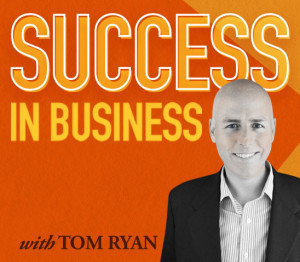 When you run a membership-based business, it’s all too easy to overlook one of the most powerful selling points you have: Membership itself. In the right context, being a member or a subscriber means more than simply paying a regular fee in exchange for a service. It means being part of a group, or even a community. As membership-based businesses grow, it’s important to keep in mind that the community is often just as important as the service.
When you run a membership-based business, it’s all too easy to overlook one of the most powerful selling points you have: Membership itself. In the right context, being a member or a subscriber means more than simply paying a regular fee in exchange for a service. It means being part of a group, or even a community. As membership-based businesses grow, it’s important to keep in mind that the community is often just as important as the service.
Think about this: What’s the value of Facebook or Twitter without their communities? Facebook is fundamentally a piece of software, and it can do some useful things like store photos online or remind you of important dates. But the value of Facebook isn’t really the software, it’s the community that it connects.
Even when community wasn’t built into the business plan for a membership-based service, it’s common for it spring up as a byproduct. In most cases, it’s something you want to encourage and embrace. When you’re able to extend the value of your product beyond just the actual product itself, things can get very exciting and very powerful.
Think this doesn’t apply to your business? Consider this: In an earlier post, I mentioned working with a subscription-based deal-flow platform for private equity. It’s an enterprise-level platform, with a monthly subscription fee costing hundreds of dollars every month. That’s not the kind of platform most people associate with community-building, right?
Every so often, I’d get a really interesting inquiry, but from a company that wasn’t in my investment space. Because the platform enabled me to see the profiles of other investors, I could find people who do invest in that space. This made it easy to reach out to those experts for advice, or even send a good opportunity their way if it was clear that we were going to pass.
That ability to create peer-to-peer relationships brought a huge amount of value to the platform. Instead of just being a discovery platform for potential investments, it became a means of making new connections with other top-notch investors and experts across the country. As a side effect of the platform’s relatively high cost, the community was self-selected for true expertise. Simply being a subscriber opened doors, because it meant that you were working with some serious investors.
Most subscription or membership-based businesses can find ways to build and reinforce community. Some businesses are more naturally aligned with community-building than others, of course, but it’s rare to find a subscription-based company where it’s simply impossible to build those connections.
In the offline world, a gym is a great people who care about personal fitness to meet, for instance. Simply adding a few tables and a vending machine stocked with protein bars can go a long way towards encouraging socialization, while adding a lounge or non-workout related events can make the space a community hub.
It’s even easier to build community online. Social media groups, online forums and email lists make it simple for members to connect with each other. Members-only content, like webinars or Google Hangouts, can help to energize and connect members and subscribers.
When your community starts getting engaged, and the growth process starts becoming a little more organic, it’s a sign that really gaining momentum. You have a service or a product that people want to talk about, and want to share. In addition to creating a bigger customer base, connections between your subscribers starts to become a part of the service.
